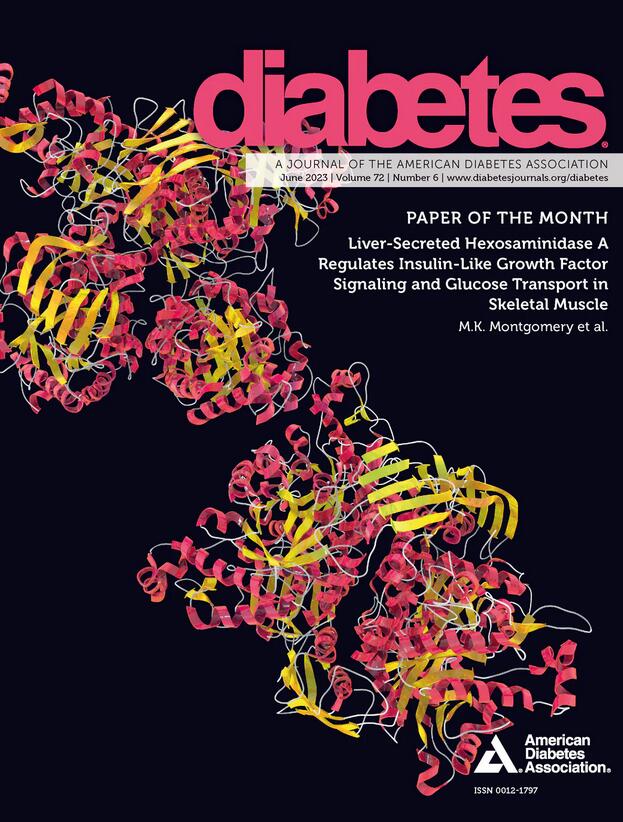人类多能干细胞免疫屏蔽胰岛的潜在异体治疗
IF 7.5
1区 医学
Q1 ENDOCRINOLOGY & METABOLISM
引用次数: 0
摘要
介绍和目的:干细胞衍生胰岛(SC-islet)替代疗法目前正在临床试验中进行研究,并显示出治疗糖尿病的巨大前景。然而,挑战仍然存在,包括使用慢性免疫抑制剂来限制对植入细胞的免疫反应。为了解决这个问题,我们假设通过基因修饰干细胞来实现局部免疫逃避,可以在没有全身免疫抑制的患者中实现功能性和持久的sc -胰岛移植。方法:利用PD-L1、FASL、CD200、CD47、HLA-G、CCL21、SERPINB9和MFGE8等基因的组成性表达,对人胚胎干细胞(hESC)细胞系进行基因修饰,使其具有免疫逃避性。还集成了一个可诱导的死亡开关,通过该开关,HSV-TK与细胞分裂基因CDK1相连,从而可以通过暴露于前药更昔洛韦(GCV)选择性地消除分裂细胞。结果:基因工程hESCs在体外能有效分化为分泌胰岛素的sc -胰岛。当与各种免疫细胞类型共培养时,这些sc -胰岛抑制免疫细胞激活并抵抗免疫细胞介导的杀伤。通过单独拮抗免疫调节因子,我们确定所有八种因子都有助于这种耐受性。当在sc -胰岛培养物中诱导增殖或故意用未分化的干细胞污染sc -胰岛时,GCV处理有效地消除了这些分裂细胞。结论:我们的数据表明,sc -胰岛被改造成过表达这八种免疫调节因子,可以使免疫逃避,杀伤开关系统可以有效地去除培养物中存在的增殖细胞。细胞植入研究正在进行中,以评估体内的免疫逃避性和杀伤开关的有效性。最终,这种方法可以为sc -胰岛治疗糖尿病提供一个通用的来源,而无需使用免疫抑制。赵:没有。梁:没有。郭亮:没有。M. Mojibian:没有。R.K.贝克:没有。冯:没有。莱文斯:没有。A.纳吉:没有。T.基弗:雇员;Fractyl Health, Inc.股票/股东;Fractyl Health, Inc.基金突破T1D (3-SRA-2022-1252-S-B)本文章由计算机程序翻译,如有差异,请以英文原文为准。
2139-LB: Immune-Shielded Islets from Engineered Human Pluripotent Stem Cells for Potential Allogeneic Therapy
Introduction and Objective: Stem cell-derived islet (SC-islet) replacement therapies are currently being investigated in clinical trials and have shown great promise for diabetes treatment. However, challenges remain, including the use of chronic immunosuppressants to limit immune reactions to implanted cells. To address this issue, we hypothesize that genetically modifying stem cells to achieve localized immune evasion could enable functional and durable SC-islet engraftment in patients without systemic immunosuppression. Methods: A human embryonic stem cell (hESC) line was genetically modified with the goal of providing immune-evasiveness through the constitutive expression of transgenes encoding PD-L1, FASL, CD200, CD47, HLA-G, CCL21, SERPINB9 and MFGE8. An inducible kill switch was also integrated, whereby HSV-TK is linked to the cell division gene CDK1 such that dividing cells can be selectively eliminated by exposure to the pro-drug ganciclovir (GCV). Results: The genetically engineered hESCs efficiently differentiated into insulin-secreting SC-islets in vitro. When co-cultured with various immune cell types, these SC-islets suppressed immune cell activation and were resistant to immune cell-mediated killing. By individually antagonizing the immunomodulatory factors, we determined all eight contribute to such tolerance. When proliferation was induced in SC-islet cultures or SC-islets were purposely contaminated with undifferentiated stem cells, GCV treatment efficiently eliminated these dividing cells. Conclusion: Our data suggest that SC-islets engineered to overexpress these eight immunomodulatory factors enable immune evasion and the kill switch system is effective in removing proliferative cells present in cultures. Cell implant studies are underway to assess the immune-evasiveness and kill switch effectiveness in vivo. Ultimately, this approach could provide a universal source for SC-islets to treat diabetes without the use of immunosuppression. Disclosure J. Zhao: None. S. Liang: None. L. Guo: None. M. Mojibian: None. R.K. Baker: None. V. Fung: None. M. Levings: None. A. Nagy: None. T. Kieffer: Employee; Fractyl Health, Inc. Stock/Shareholder; Fractyl Health, Inc. Funding Breakthrough T1D (3-SRA-2022-1252-S-B)
求助全文
通过发布文献求助,成功后即可免费获取论文全文。
去求助
来源期刊

Diabetes
医学-内分泌学与代谢
CiteScore
12.50
自引率
2.60%
发文量
1968
审稿时长
1 months
期刊介绍:
Diabetes is a scientific journal that publishes original research exploring the physiological and pathophysiological aspects of diabetes mellitus. We encourage submissions of manuscripts pertaining to laboratory, animal, or human research, covering a wide range of topics. Our primary focus is on investigative reports investigating various aspects such as the development and progression of diabetes, along with its associated complications. We also welcome studies delving into normal and pathological pancreatic islet function and intermediary metabolism, as well as exploring the mechanisms of drug and hormone action from a pharmacological perspective. Additionally, we encourage submissions that delve into the biochemical and molecular aspects of both normal and abnormal biological processes.
However, it is important to note that we do not publish studies relating to diabetes education or the application of accepted therapeutic and diagnostic approaches to patients with diabetes mellitus. Our aim is to provide a platform for research that contributes to advancing our understanding of the underlying mechanisms and processes of diabetes.
 求助内容:
求助内容: 应助结果提醒方式:
应助结果提醒方式:


